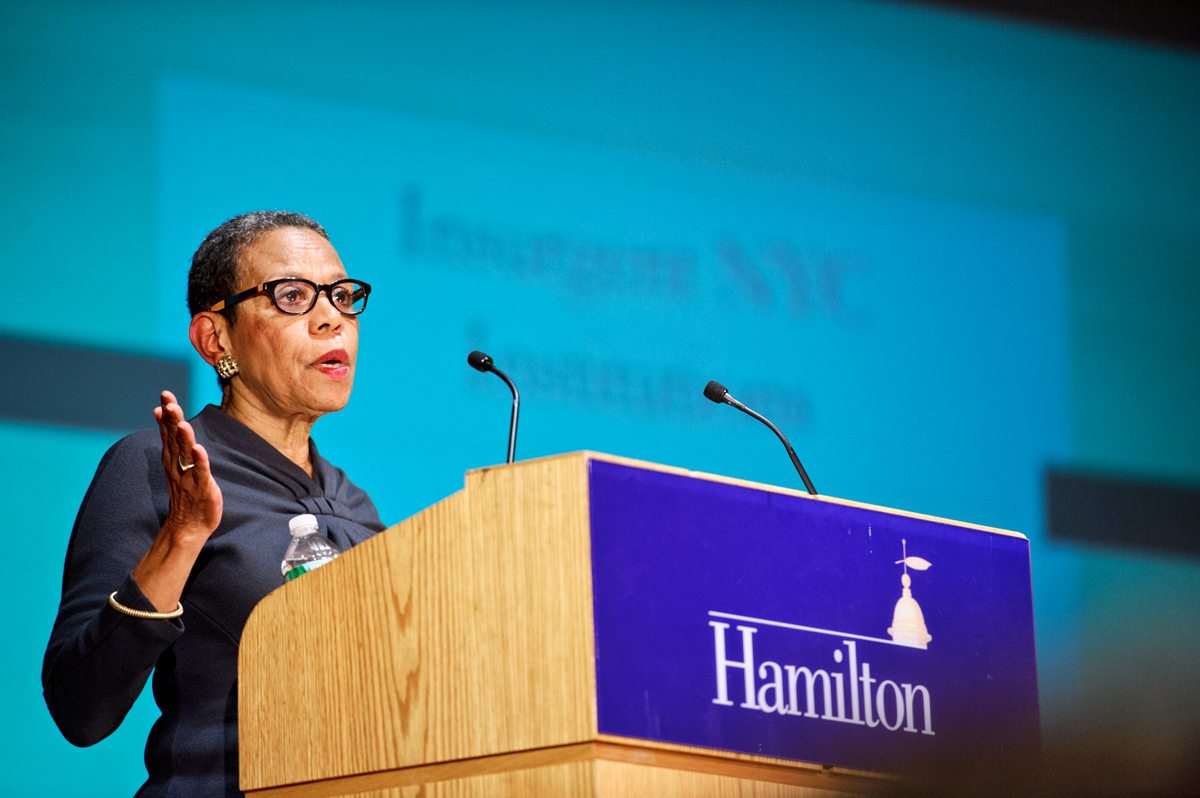
Describing the function of art is nearly as difficult as defining it. Both the purpose and objective of art are fluid concepts, changing based on the perspective and context of those viewing it. More than anything, though, art is powerful, holding within itself the capacity for great change. It is effectively an insurgent: a catalyst capable of causing social and cultural advancement from within an institution itself.
Mary Schmidt Campbell expressed this very perspective at Hamilton College on Oct. 10. As a former curator, museum director and current dean emerita of the New York University’s Tisch School of the Arts, Mary Campbell well understands the tremendous impact that art can have, not solely on an individual, but an entire community as well. Speaking at the dedication of the Kevin and Karen Kennedy Center for Theatre and Studio Arts, Campbell marveled at the Hamilton community’s opportunity to experience our own artistic resurgence. Within this opportunity lies the potential for revitalizing the atmosphere of liberal arts on campus and ushering in a new era of intellectual depth at Hamilton College.
However romantic these notions may seem at first glance, they are nevertheless grounded in historical truth. According to Campbell, New York City experienced firsthand the “potency of the arts,” a term used to describe capacity of art to enact immense change within a community. By the mid 1970s, the Big Apple was rotting away. Facing increasing crime, poor infrastructure, failing schools, and even the threat of bankruptcy, New York City was collapsing under its own weight.
Abandoned building lined the streets as residents scattered from the city, desperate to leave their prior homes. Once vibrant locales like Harlem stood in ruin. While others exited the city in droves, artists flocked to the metropolitan cityscape.
Nonprofit art organizations began to repurpose the previously vacant buildings, turning the decaying structures into functioning residences for artists and other creative minds alike. These projects, while severely underfunded, began to show results. People began to connect with others, using art as their medium. Ideas were exchanged, concepts debated, and improvements made. Through efforts of outreach, change blossomed, enveloping community after community and pulling the city out of the depths of decay.
Art is indeed a powerful instrument, capable of shifting the dynamic of a community from the inside out. With the creation of the Kennedy Center, Hamilton College is now faced with an amazing opportunity to revolutionize our utilization of art, which if done correctly could yield near limitless opportunities.
During her address, Campbell stressed the idea that the Kennedy Center was not just a building; the completion of its construction signified much more than placing together the last brick and mortar. It is an investment in and a commitment to the intellectual development of the students at Hamilton.
According to Campbell, the Kennedy Center will ultimately serve three major purposes: a marketplace for ideas, a force of collaboration, and a site of research. President Kennedy once stated that, “Art is a form of truth.” Through the use of discussion, debate and the sharing of ideas about art, the Kennedy Center will provide individuals with a platform with which to further their understanding about the nature of truth. By bringing differing perspectives together, the Center can also be used to teach the difficult skill of collaboration. Dealing with perspectives that are not one’s own not only challenges a person’s understanding, it also provides an opportunity for people to grow and develop as a community. Finally, the building will instigate further and deeper research into the complexities of the arts, a process that will ultimately lead to a better understanding of the world in which we live.
As Mary Schmidt Campbell stated at the conclusion of her address, the true power of art comes from the integrity of the artist and the interpretation of the art. Art has tremendous authority, but it is the people that give it the power of insurgency. The Kennedy Center may very well be a catalyst for social and cultural advancement at Hamilton College, but it is up to us to make it so.
Posted October 11, 2014
